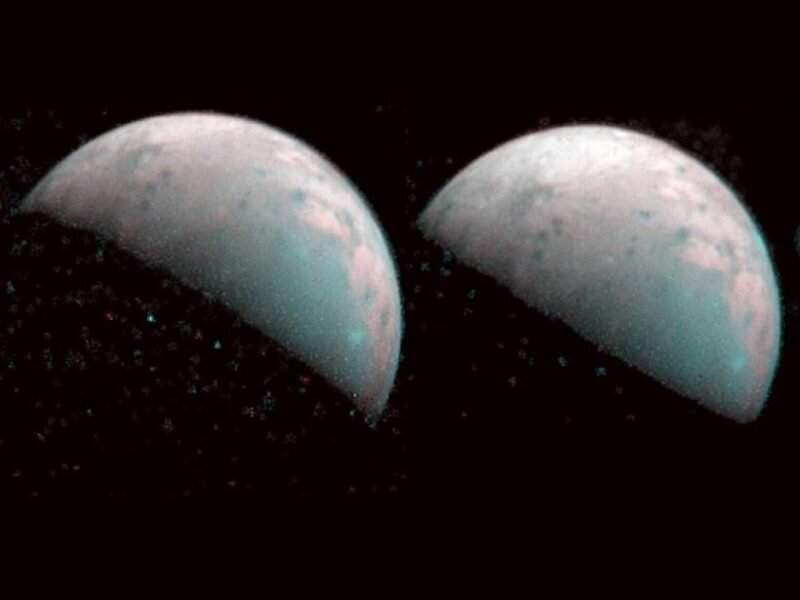
[ad_1]
Jupiter’s moon, Ganymede, is the largest planetary satellite in the solar system. It is also one of the most intriguing: Ganymede is the only moon with its own magnetic field, it is the most differentiated of all the moons, and it probably has an ocean of liquid water below the surface. It was investigated by the first overflights of Jupiter by the Pioneer and Voyager spacecraft, but our understanding today is largely based on observations made by NASA’s Galileo orbiter from 1995 to 2003.
Mura et al. now report some of the first in situ observations of Ganymede since the end of the Galileo mission. They used the Jovian Infrared Auroral Mapper (JIRAM) aboard NASA’s Juno spacecraft to take images and spectra of the moon’s north polar region. On December 26, 2019, Juno passed Ganymede at a distance of approximately 100,000 kilometers, allowing JIRAM to map this region at a spatial resolution of up to 23 kilometers per pixel.
As Juno flies over Ganymede, the spacecraft can observe physical locations on the moon’s surface from different angles. By comparing the brightness of these regions across a range of observation and lighting geometries, the authors developed a photometric model for Ganymede surface reflectance. They observed that wavelength-dependent reflectance relationships sometimes break down near relatively cool craters, possibly due to a larger average ice grain size in these regions.
Combining their model with spectral observations of the 2 micron water ice absorption band allowed the authors to map the distribution of water ice in the North Polar region. Where these estimates overlapped with maps derived from telescopic Earth-based observations, the researchers found broad agreement. This congruence allowed them to extend the global map of the water ice from Ganymede to much more northern latitudes.
Observations in other spectral bands have also revealed the presence of non-aquatic chemical species on the surface of Ganymede, including possible detections of hydrated magnesium salts, ammonia, carbon dioxide and a range of organic molecules.
NASA Juno takes the first images of the North Pole of the Jovian moon Ganymede
A. Mura et al. Ganymede infrared observations from the Jovian infrared auroral mapper on Juno, Journal of Geophysical Research: Planets (2020). DOI: 10.1029 / 2020JE006508
Provided by Eos
This story is republished courtesy of AGU Eos (https://eos.org/). Read the original story here.
Quote: Juno maps water ice in northern Ganymede (2021, January 21) retrieved January 21, 2021 from https://phys.org/news/2021-01-juno-ice-northern-ganymede.html
This document is subject to copyright. Apart from any fair use for study or private research, no part may be reproduced without written permission. The content is provided for information only.
[ad_2]
Source link